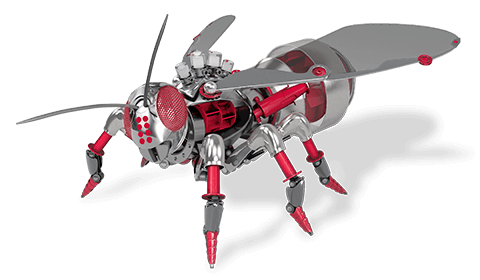Medical parts molder virtually eliminates black spec contamination with solution that includes Pelletron DeDuster® Technology.
Avoiding Black Spec Contamination
Black spot contamination was a major problem for this molder of medical parts. The contamination was found in both the acrylic and crystal styrene materials; however the styrene was far worse due to excessive fines on the pellets. These fines were a result of the number of times the material was being conveyed after manufacture. The styrene was palletized and then bulked into holding silos. Then, it was moved from rail cars, to bulk trucks, into Gaylords and finally into hoppers. All of this movement created a high volume of fines.

Although the fines were caused by excessive handling in the styrene, the issues with the acrylic were more a result of material contamination. The Gaylords were covered, however, the covers were not solving the problem. The material handlers were required to constantly pull the covers back up on top of the Gaylords. They also had to reach into the Gaylords to move material down toward the vacuum tube so it could suck the material up into the hopper. To complicate matters, several black materials were run at the plant, many with glass or carbon fillers, and dust from regrind and general handling was getting into the air as well.
When a Gaylord cover is in place, it prevents that dust from getting into the material, but every time a cover falls into a Gaylord, or the material handler removes a cover to move the material toward the vacuum tube, that dust falls into the clear material. Contamination was inevitable in this environment.
For a crystal styrene job, they usually run two machines, and on an acrylic job they usually ran four. Each machine had one Gaylord. This compounded the opportunities for problems and also added additional work for the material handling staff.
The solution:
- Reduce number of Gaylords
- Modify Gaylord covers
- Install Gaylord tipper
- Add tarp holders with bungee cords
- Install Pelletron P5 DeDuster® on top of the drying hopper
- Install Pelletron P1 DeDuster® on top of the molding machine

The production manager reported, “the first thing we did was to add plastic tarp holders to two sides of each Gaylord cover. We then bought fairly light duty bungee cord by the roll with plastic clips that fit on the ends. We can now slide the bungees through the pallet and clip the cords onto the covers, thus preventing the covers from being sucked into the Gaylord. (Make sure you don’t make them too tight or you may create a hazard when releasing one side)”

With those modifications in place, they had eliminated the potential for foreign particles from entering the Gaylord’s. The next step was to deal with the fines. For this purpose, they purchased a Pelletron P5 DeDuster®, (500 lbs/hr).
“This device not only vacuums off fines, but it also uses anti-static disruption to help release the fines from the pellets that were held there by static electricity,” according to the production manager. He continued, “the DeDuster® was mounted on top of the drying hopper. It instantly stopped the black specs caused by burning of the fines in the styrene, enabling preventing the black spec problems that occurred in almost every spot in the process. However, an interesting thing happened as we began to check the fines that were being removed; there were still foreign specs in the fines.

Management later said, “even though we had significantly reduced the opportunities where black specs could get into a Gaylord, we had not totally prevented them. We learned that if specs did happen to get into our clear material, we could still keep them from getting into our parts with the use of the DeDuster®. So, we added P1 Mini-DeDuster® (100#/hr capacity) to the molders for the acrylic jobs. To date, our Black Spec problem has been virtually eliminated. We must still be diligent in our control and use of hot runner systems to avoid introducing black specs from the mold, but we have greatly decreased our scrap and increased our yields while running clear materials.”
Discover the Pelletron World - this might also interest you:








